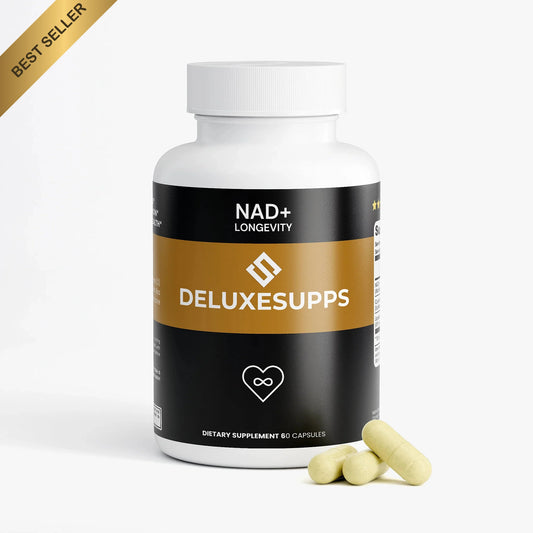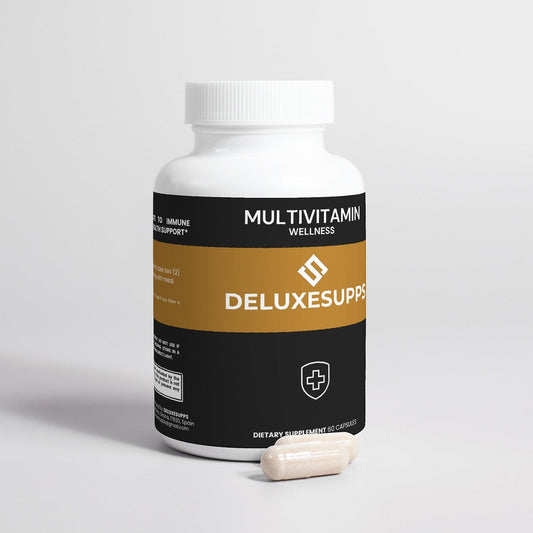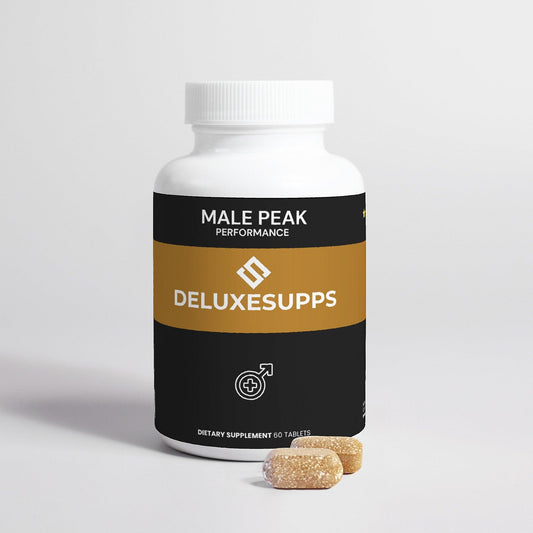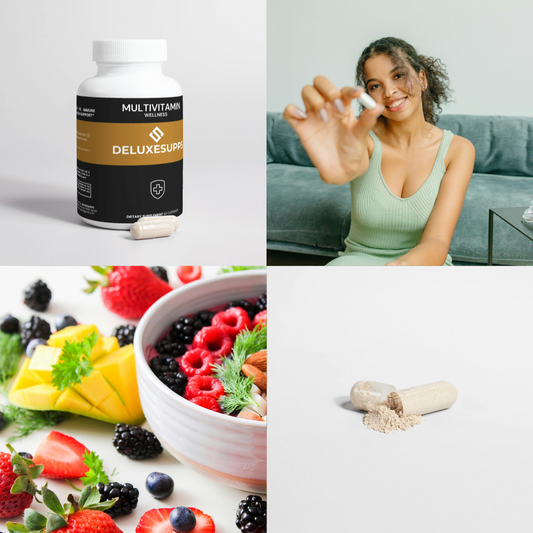Updated on: 2025-11-17
Table of contents for ashwagandha capsules
- Ashwagandha capsules overview for informed buyers
-
Step-by-step guide to choosing ashwagandha capsules
- Step 1: Define your goals and preferred format
- Step 2: Verify extract type and standardization
- Step 3: Check serving size and dosage information
- Step 4: Confirm sourcing, certifications, and testing
- Step 5: Review capsule materials and other ingredients
- Step 6: Evaluate brand transparency and support
- Step 7: Plan timing, storage, and consistency
- Practical tips for ashwagandha extract capsules and powders
- FAQs on ashwagandha capsules, dosage, and safety
- Wrap-up and final thoughts on selecting ashwagandha capsules
- About the author: Deluxesupps Deluxesupps
Ashwagandha capsules overview for informed buyers
Ashwagandha capsules remain a widely chosen format for those who prefer convenience, measured serving sizes, and simple storage. In the first purchase decision, many shoppers compare ashwagandha extract capsules with ashwagandha powder. Capsules can mask taste and simplify daily routines, while powders may offer flexible serving sizes for blending into drinks. Both formats can belong to a broader category of ashwagandha supplement capsules and powders that vary by extraction, standardization, and ingredient quality.
The main keyword to consider throughout this guide is ashwagandha capsules. Product labels differ in extract type, potency, capsule composition, and additional ingredients. Understanding these differences helps you compare options objectively. The sections below outline an evidence-aware approach to reading labels, interpreting extraction details, and assessing quality markers, without making medical claims or suggesting therapeutic outcomes.
Step-by-step guide to choosing ashwagandha capsules
Step 1: Define your goals and preferred format
Clarify what matters most in your daily routine. If you value speed and taste masking, ashwagandha capsules may suit you better than ashwagandha powder. If you prefer flexible serving sizes and mixing options, powder can be practical. Note whether you seek whole-root powder or standardized ashwagandha extract capsules, because the label and ingredient list differ across these formats.
Step 2: Verify extract type and standardization
Examine the label for extract specifications. Look for clear details such as “root extract,” “root and leaf extract,” or “whole root powder.” Many labels also state an extraction ratio (for example, 10:1) or standardization markers (for example, a quantified withanolide content). Transparent labeling helps you compare products consistently and evaluate how an extract-based product differs from non-extract ashwagandha supplement capsules.
Step 3: Check serving size and dosage information
Serving size varies by brand and product format. Labels commonly list a per-capsule amount of root powder or root extract and a suggested number of capsules per day. Note both figures to calculate the total daily amount. For example, some capsule products communicate a per-serving range that readers may see in the market, often between a few hundred milligrams and higher amounts per day. This is not a recommendation. It is an example of how labels may present information. For organic ashwagandha capsules dosage, read the exact serving directions on the product label and use those directions as your reference.
Step 4: Confirm sourcing, certifications, and testing
Quality-focused products frequently highlight sourcing details and testing practices. Common signals include third-party testing, identity verification of plant material, and purity testing for potential contaminants. Certifications such as organic, non-GMO, vegan, or allergen statements can also appear. When present, these markers help you evaluate whether a product aligns with your personal standards. If the product references a testing lab or certificate, look for specific methods or batch-level documentation where available.
Step 5: Review capsule materials and other ingredients
Capsules may use gelatin or plant-based alternatives such as hydroxypropyl methylcellulose. Some formulas include flow agents, stabilizers, or other excipients. If you avoid certain ingredients, verify the capsule composition and any “free-from” claims on the label. Transparent brands list all components clearly so you can make an informed choice.
Step 6: Evaluate brand transparency and support
Reliable brands make it easy to learn about their products and values. Check whether the brand explains its sourcing, extraction approach, and testing. A concise brand background can be found on an About page. If you are evaluating a retailer, scan the store’s company page and contact options to gauge responsiveness and support.
For an example of how reputable retailers present brand information, you can review the About page, explore the full catalog on Shop all, or reach out through Contact with product questions. You can also start at the Deluxesupps homepage to navigate categories efficiently.
Step 7: Plan timing, storage, and consistency
Decide when you prefer to take capsules based on your daily routine. Read the label regarding whether to take with food and any other usage notes. Store products according to package instructions, typically in a cool, dry place. Consistent use according to label directions supports a stable daily habit without overuse.
Practical tips for ashwagandha extract capsules and powders
- Start by comparing format: ashwagandha extract capsules for convenience and standardization versus ashwagandha powder for flexible mixing.
- Prioritize clear labels that differentiate whole-root powder from standardized extract and specify any withanolide quantification.
- Read the full supplement facts panel and serving instructions; note the number of capsules per serving and total per day on the label.
- Check for third-party testing statements, batch traceability, and documented quality controls such as identity and purity checks.
- Confirm capsule materials (gelatin or plant-based) and screen for allergens or additives you prefer to avoid.
- Consider product packaging: light-resistant and sealed containers can support freshness when stored correctly.
- Keep expectations practical; avoid products that imply treatment or exaggerated outcomes.
- If you see “best ashwagandha capsules for anxiety” in marketing, focus instead on verifiable quality criteria and consult a qualified professional for personal guidance.
FAQs on ashwagandha capsules, dosage, and safety
What are the benefits of ashwagandha capsules?
The benefits of ashwagandha capsules primarily relate to format and practicality. Capsules offer measured serving sizes, taste masking, portability, and straightforward storage. They can simplify consistent daily use compared with powders that require measuring and mixing. Many consumers also value capsules for standardized extract options and clear label information. This guide does not make health claims or provide efficacy statements.
What is the recommended dosage and safety of ashwagandha capsules?
Always follow the serving directions printed on the specific product label. Dosage and serving frequency vary by extract type, standardization, and capsule strength. In the market, labels often display per-serving totals within a broad range that can span a few hundred milligrams or more per day. This is presented here only as an example of how labels may read, not as a recommendation. If you have questions about safety, allergens, drug interactions, or individualized use, consult a qualified healthcare professional before using any product.
How do ashwagandha supplement capsules compare with ashwagandha powder?
Ashwagandha supplement capsules provide convenience, discreet use, and standardized serving sizes. They are typically easier to integrate into a daily routine. Ashwagandha powder offers flexibility for blending into beverages or recipes and may suit those who want fine-grained control over serving amounts. Your choice depends on label clarity, desired extract type, and how you prefer to take supplements day to day.
How should I approach “best ashwagandha capsules for anxiety” claims?
Such phrases are common in search and marketing, but they can imply treatment claims. Focus on objective quality signals: transparent labeling, extract details, third-party testing, and responsible communication. Avoid products that promise outcomes that cannot be verified. For personal concerns or condition-specific questions, consult a qualified healthcare professional.
Wrap-up and final thoughts on selecting ashwagandha capsules
Selecting ashwagandha capsules is easier when you apply a consistent checklist. Verify extract type and standardization, compare label-stated serving sizes, and confirm quality controls. Review capsule materials and supporting ingredients to match your preferences. Emphasize transparency and accessible customer support. When evaluating marketing around ashwagandha extract capsules, rely on verifiable facts rather than therapeutic promises. For store navigation and brand details, you can begin at the Deluxesupps homepage or browse categories via the “Shop all” catalog.
About the author: Deluxesupps Deluxesupps
Deluxesupps Deluxesupps
Deluxesupps Deluxesupps specializes in supplement education and buyer’s guides focused on label literacy, quality standards, and clear product comparisons. The goal is to help readers navigate choices such as ashwagandha capsules with practical, neutral criteria. Thank you for reading, and feel free to reach out with topic suggestions.
The content in this blog post is intended for general information purposes only. It should not be considered as professional, medical, or legal advice. For specific guidance related to your situation, please consult a qualified professional. The store does not assume responsibility for any decisions made based on this information.












